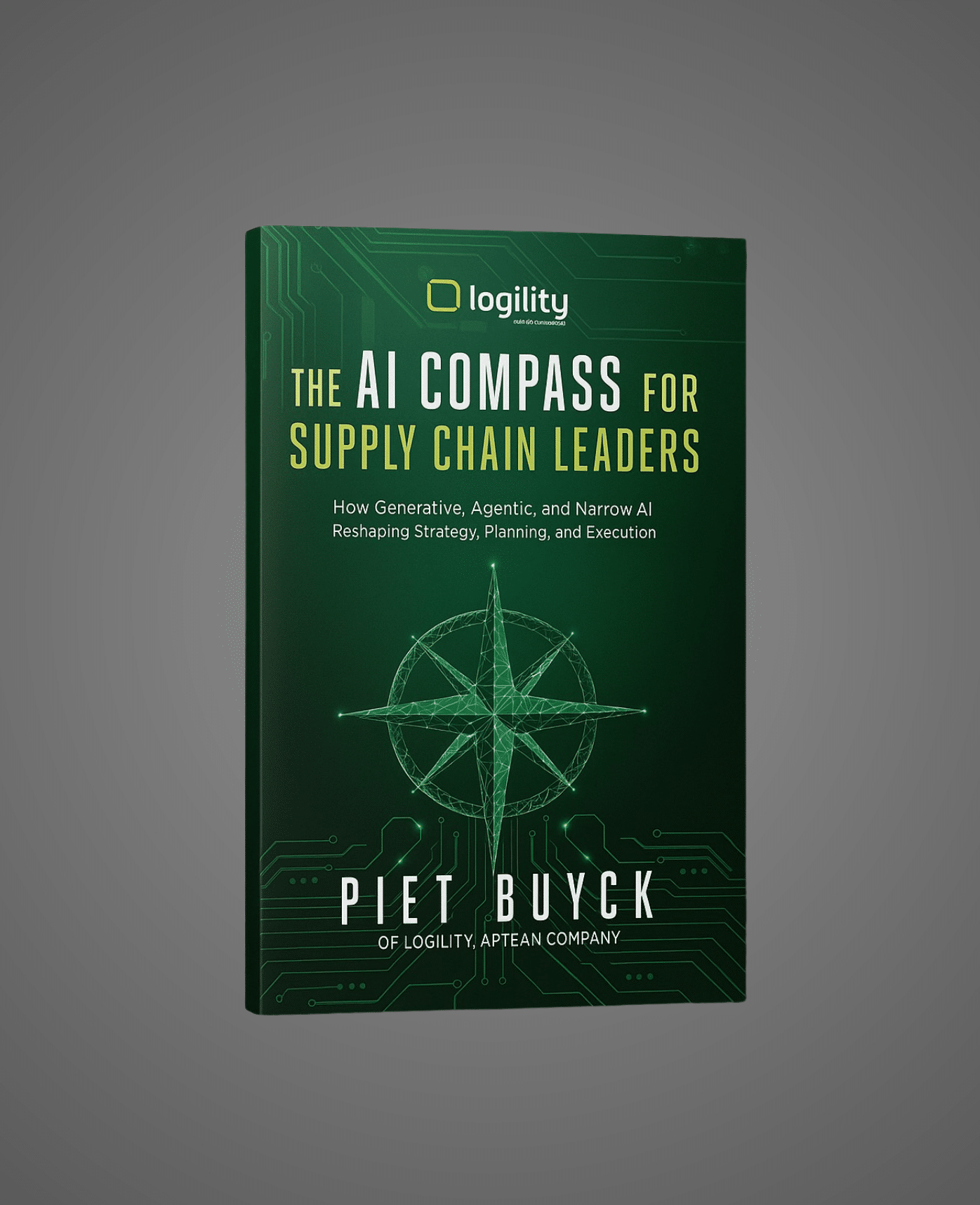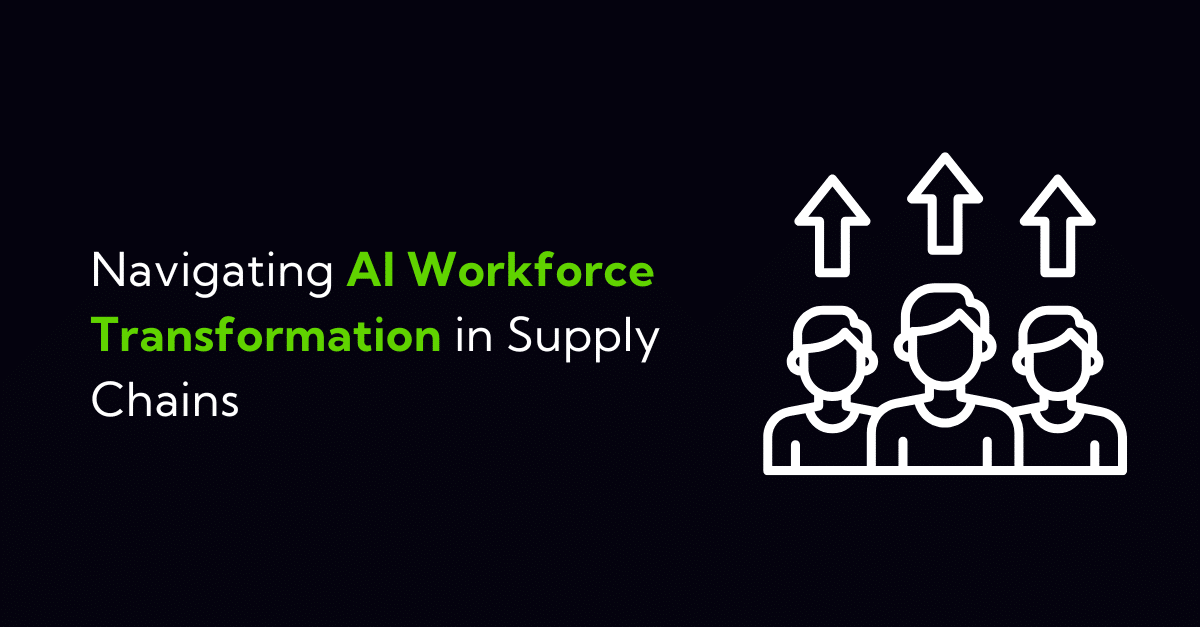
Learn how Generative, Agentic, and Narrow AI work together to boost forecasting accuracy, decision-making, and efficiency in modern supply chain planning.
While many supply chain organizations currently use some form of AI in their planning, the real value comes from combining different types of AI in a collaborative workflow. When working in unison, Generative AI, Agentic AI, and Narrow AI can be a powerful force in supply chain planning.
Traditional planning processes, such as S&OP and IBP, can no longer keep pace in today’s volatile environments due to their high costs, labor-intensive nature, and unreliability in yielding actionable insights and accurate outcomes. However, there are opportunities to be found in the disruption, and organizations that learn how to leverage AI to navigate the challenges can outperform competitors, grow profit margins, and improve their forecasting and planning.
Generative AI, Agentic AI, and Narrow AI each have their own strengths. One explains, one orchestrates action, and one specializes. Combining the strengths of these AIs in one operating model offers enhanced foresight, decision readiness, and support under one roof. By using all three to create an AI compass, organizations can shed the constraints and inaccuracies of the past and chart a course to the new future of supply chain planning.
Generative AI for Supply Chain Planning: Turning Data into Narratives
Generative AI creates new content, including text, images, and code, using large language models to learn patterns from existing data. Within supply chain planning, it can turn raw data into narratives that people can understand and act on. It starts by crunching numbers to explain shifts in baseline, trend, seasonality, and events, making complex analytics accessible to non-experts. While planners have historically used Excel spreadsheets and PowerPoint files to present information, natural language enables the planning team to collaborate through interactive reports with built-in feedback that can align all departments on the drivers behind the changes. AI democratizes access to supply chain formation, enabling organizational users to access and contribute to the system without special skills or tools.
The ability to share with anyone and allow anyone to contribute improves cross-functional alignment and supports productivity as users can understand the “why” of actions and recommendations. By understanding how the data was gathered and its full nature and context, they can understand the impact and origins of events.
With Gen AI as an interface to the planning system, users can ask it to offer options and explanations in natural language instead of just looking at charts and data. This makes insights more accessible and helps them query scenarios of economic and macroeconomic information with natural language. For example, a planner could run a scenario where inflation rises by 10%, then identify the resulting issues in the supply chain and determine the best way to address them. Finally, with all information stored and categorized digitally, GenAI can act as a digital colleague and prepare reports needed for the accompanying analysis.
Agentic AI: Autonomous Decision Partner for Real-Time Supply Chains
Agentic AI is an AI system that can act as an autonomous agent to plan, make decisions, and take actions towards specific goals. Within supply chain planning, it can act as a decision partner to monitor the signals and propose next best actions when thresholds are crossed. This enables teams to act more in real-time and respond to events as they happen, instead of waiting days or weeks for the next meeting. Agentic AI can also act as a force and process enabler for small teams by automating repetitive and routine workflows, such as assembling the information for the demand plan.
Agentic AI can help planners improve and scale processes and deploy them at lower costs. It also helps frame trade-offs, enabling human decision makers to make the best choices and spend more time on judgment rather than data wrangling.
Agentic AI uses the digital building blocks provided by Narrow AI to attain accessible insights, including economic environments, promotions, price changes, and team actions, in a digital format. As agents provide a permanent update to the data, Gen AI analyzes the data, calculates the impacts, and aligns all users on the same dataset to understand the potential outcomes as events occur. Another benefit of Agentic AI is that it can flag deviations and actively request additional information, eliminating the need to clean historical data. It learns from exceptions in future use, and can automatically remove them when they cannot be explained. This enables different personnel to capture all information and gain market insights in real-time.
AI agents can collaborate with the human workforce and, in some cases, fully assume human roles. They can engage in goal-oriented behavior where humans set goals, then let the agents act independently to achieve them and adapt their strategies when necessary. Agents can also engage in logical reasoning and planning by perceiving and analyzing the environment and breaking complex tasks down into smaller components. Finally, agents offer long-term memory and reflection by drawing on past interactions to understand the context better and learn from the experience. This enables planners to learn from outcomes and exceptions, refining future proposals and making better recommendations the next time.
Get my new book, The AI Compass for Supply Chain Leaders
The AI Compass for Supply Chain Leaders introduces a bold new approach where artificial intelligence and human insight work hand-in-hand to drive faster, smarter, and more resilient decisions. Drawing on groundbreaking research and real-world applications, this book reveals how leading organizations are transforming their planning processes to thrive in uncertainty.
Request CopyNarrow AI Forecasting: Specialist Tools to Reduce Errors
Narrow AI is designed to perform a specific task or a limited set of functions and operates within a predefined range without general intelligence or self-awareness. Within supply chain planning, it can be used in statistical demand planning, network optimization, or scheduling. Narrow AI offers accurate and reliable models for specific tasks, such as forecasting, optimization, and anomaly detection, components that underpin the whole system.
Using historical data mining with Narrow AI for analysis makes building blocks available to all cross-functional teams. The resulting predictions, typically expressed in a numerical value and time series, can help stakeholders understand the long-term opportunities and risks relative to the baseline and trend.
Narrow AI works with the advanced AI planning engine to combine all available information through ensemble modeling. This approach enables AI to integrate multiple data streams and forecasting models into a single, more robust and accurate prediction. Traditional time series forecasting models struggle with complex patterns and fluctuations, and can’t always properly handle multiple types of data streams. However, ensemble modeling thrives on this complexity and can handle things like terms, seasonality, and new product introductions. This reduces errors by 10-15% compared to traditional statistical or general-purpose AI models. It also translates and formats the information for the rest of the organization, splitting demand into components like baseline, trend, promotions, seasonality, and events.
Using AI in demand sensing transforms the challenging bullwhip effect into significantly better forecast results. Demand sensing monitors real-time data like sales, orders, inventory, social sentiment signals, and weather to improve near-future forecasts. This reduces forecast errors by up to 30% and improves the performance of the Agentic AI.
Conclusion
As supply chain management is about understanding customer needs, production, and fulfillment, it relies on a constant stream of decisions. AI is evolving at a rapid pace, becoming faster, more cost-effective, and more intuitive, creating specialized and widely applicable capabilities. However, outcomes are dependent upon how the AI is used. Treating all three layers as a collaborative system supports a planning model that can identify issues, make decisions, and act with transparency.
The most significant impact of AI will be in planning, where it can improve traditional processes like S&OP, S&OE, and strategic planning. It can integrate planning levels, enabling real-time information capture and better alignment across the organization. AI can also help ensure the right people are informed and engaged, whether it is in routine estimations, responding to risks, or driving major strategic shifts. As AI takes over many manual and time-consuming tasks, systems will become more fluid, and organizations will be able to focus more on customer experience.
Frequently Asked Questions
What is the AI Compass in supply chain planning?
The AI Compass is a framework that combines Generative AI, Agentic AI, and Narrow AI to improve foresight, decision readiness, and action in supply chain planning. Using all three of these AIs together helps organizations improve forecasting accuracy, increase profit margins, and outperform their competitors.
How does Generative AI help supply chain planners?
Generative AI enables supply chain planners to turn raw data into clear, actionable narratives. It can explain shifts in baseline, trend, events, and seasonality, making complex analytics accessible to non-experts. Planners can use natural language to query scenarios and receive instant insights
What role does Agentic AI play in decision-making?
Agentic AI can act as an autonomous decision partner by monitoring signals, flagging deviations, and proposing the next best actions. This enables planners to focus more on strategic judgement instead of manual data tasks.
Why is Narrow AI important in forecasting?
Narrow AI specializes in specific tasks, such as statistical demand planning and network optimization. By integrating multiple data streams through ensemble modeling, it can support real-time decisions and reduce forecast errors by up to 15% compared to traditional models.
How does the AI Compass improve traditional planning processes like S&OP?
By integrating all three types of AI, the AI compass supports real-time information capture, better cross-functional alignment, and more accurate forecasts. It makes S&OP and IBP processes faster, more cost-effective, and better suited to today’s volatile markets.

Written by
Piet Buyck
SVP, Solution Principle
Short bio
Piet Buyck is a global technology executive with over 30 years of experience in managing and positioning high-value IT applications that disrupt current practices. He is well-known as an influential and strategic business thought leader and entrepreneur with significant achievements and expertise in artificial intelligence, demand sensing, and demand planning.




